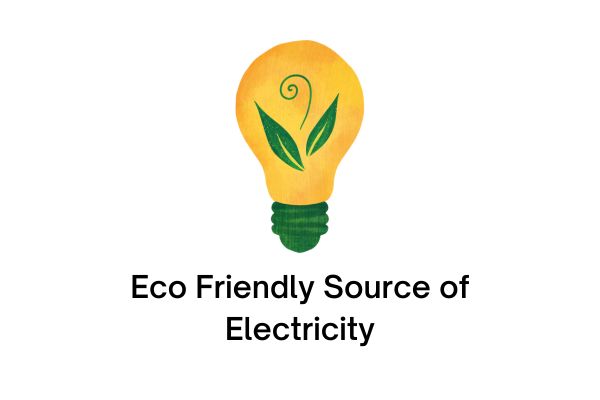With an electrical energy source, it will certainly facilitate various types of activities carried out by humans. However, it must be ensured that the energy source is environmentally friendly. There are quite a lot of examples of Eco Friendly Source of Electricity.
This is because electricity is one of the main things that is now widely used by humans. It could be said that now humans cannot live without the help of electrical energy.
However, it turns out that there are still some who don’t know what sources of electrical energy exist on earth. Apart from that, the source must be friendly to the environment you live in.
For this reason, in this explanation, we will provide a description of what examples of electrical energy sources will be friendly to the environment we live in.
Apart from that, an explanation will also be provided regarding examples of alternative electrical energy sources that are environmentally friendly.
Daftar Isi
Examples of Eco Friendly Source of Electricity
As previously explained, there are several special electrical energy sources that are safe for the surrounding environment. So that using it will certainly not harm the surrounding environment.
Are you curious about what examples of environmentally friendly electrical energy sources there are? For this reason, consider the following examples:
1. Solar Energy
The first example of an electrical energy source that is friendly to the environment is solar energy.
As is known, solar energy will certainly be able to deliver the heat it has to the earth.
So this will provide various benefits, one of which is for electricity needs. Sunlight has been widely used by society as an energy source for solar panels and Solar Power Plants (PLTS).
These devices function by converting heat energy from the sun into electrical energy.
This process starts with solar panels which convert heat energy into electrical energy.
Using solar energy like this has an environmentally friendly impact because it does not require special fuel which produces carbon gas emissions in the process.
2. Water Energy
Water energy is a type of energy obtained from the movement of water, especially through water currents or flows.
One way to produce this energy is through Hydroelectric Power Plants (PLTA), which allows humans to meet their electricity needs.
The process of making a hydroelectric power plant begins with building a dam and creating a large reservoir which aims to regulate the flow of water that will drive the turbine.
The greater the flow of water that passes through the turbine, the greater the electrical energy produced.
Therefore, energy production from hydropower is highly dependent on the availability of water supplies.
3. Wind Energy
Wind energy is an environmentally friendly source of electrical energy. This energy source comes from wind flow which can be used to produce electrical power.
One technology used to convert wind energy into electrical energy is a windmill.
When the wind pushes the blades of a windmill, the blades will spin, producing mechanical energy. This mechanical energy is then used to drive a wind turbine connected to a generator.
This generator is responsible for converting mechanical energy into electrical energy that can be used for various purposes.
The use of wind energy through windmills does not cause pollution that is harmful to the environment, so it is an environmentally friendly alternative to meet energy needs.
Examples of Alternative Electrical Energy Sources
Various alternative electrical energy have been developed in Indonesia. One of them is the use of water energy through hydroelectric power plants.
Apart from that, there is also the use of waste energy through Waste Power Plants, as well as wind power, solar power and other options.
Implementation of alternative energy-based power plants has been carried out in several projects, while others still have the potential to be implemented. Here are some of them:
1. Lightning Power Plant
The operation of a lightning power generation system follows basic principles involving several stages. First, the lightning will be drawn towards the iron rod that has been carefully installed.
Next, the energy collected from lightning is converted into an electric charge which is channeled to a series of capacitors structured in a parallel configuration.
This circuit also includes resistors which are designed in such a way as to ensure even distribution of electrical charge across the capacitor.
By arranging capacitors in parallel, the total capacity of the system can be increased, allowing for efficient harvesting of greater energy and uniform charge distribution.
2. Waste Power Plant
One method that is often used in waste power plants today is through the incineration process. This process begins with unloading the waste from the waste collection truck and feeding it into the inserator.
In the incinerator, the waste is then burned, producing heat which is later used to convert water into high-pressure steam.
The steam is then channeled from the boiler directly to the turbine.
The remains from the combustion process, such as dust, will be processed further so as not to cause environmental pollution.
This is done through the use of special trucks that transport the remains of the burning process.
These are some examples of eco friendly source of electricity. So you don’t need to worry if you want to take advantage of some of these sources.
However, it must be ensured that its use complies with existing regulations.
Read Also :
